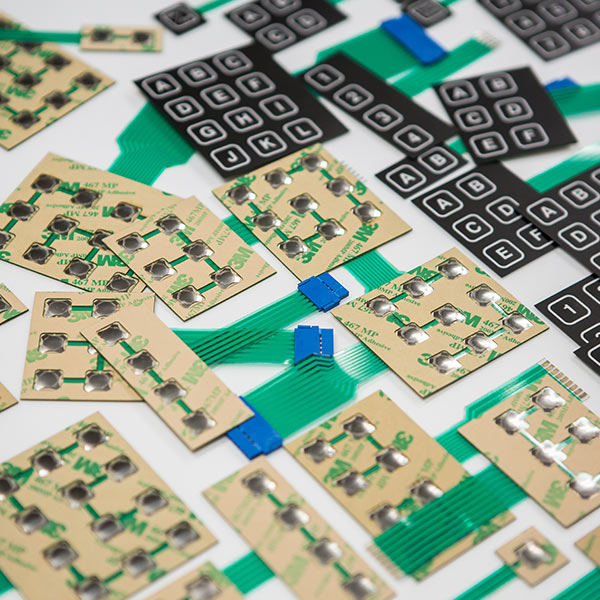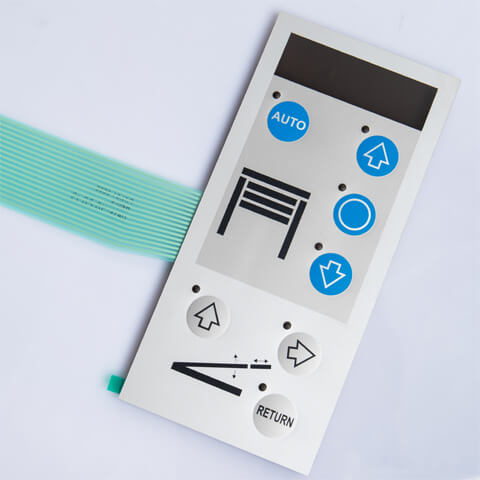The Ultimate Source on Membrane Changes: Style, Performance, and Applications
Membrane switches over serve as an interesting crossway of style and performance, playing a critical function in modern-day customer interfaces throughout numerous markets. As we explore the diverse applications of membrane layer buttons, it becomes obvious that their flexibility and longevity are vital in environments ranging from health care to customer electronics.

Understanding Membrane Buttons
Membrane switches are a sort of individual interface innovation commonly utilized in numerous digital devices, defined by their thin, adaptable design and capability. These buttons contain several layers that consist of visuals overlays, glue layers, and circuitry, allowing a efficient and small user interface for customers. They can be discovered in devices, clinical gadgets, and commercial control panels, giving a reputable approach for user communication.
Among the primary advantages of membrane buttons is their ability to withstand contaminants such as dust and dampness, making them appropriate for atmospheres where resilience is essential. Their inconspicuous style enables smooth assimilation into various applications, while the personalized visuals overlays boost customer experience by giving clear visual responses. In addition, membrane switches can accommodate a range of innovations, such as responsive responses and backlighting, additional improving their usability.
The production process for membrane layer changes normally involves display die-cutting, lamination, and printing methods, making certain accuracy and uniformity in production. Generally, membrane switches over stand for a versatile and reliable service for contemporary digital gadgets, incorporating capability with visual appeal in customer interface design.
Key Parts and Style Aspects
A variety of crucial components and layout aspects integrated to develop a reliable membrane switch. At the core, the graphic overlay serves both visual and useful functions, supplying a straightforward interface while protecting internal parts from environmental factors. The choice of materials, commonly polyester or polycarbonate, influences durability and tactile feedback.
Underneath the overlay, the glue layer makes sure the switch adheres firmly to the substrate, which can be metal, plastic, or glass. The spacer layer is vital, as it preserves the essential space between the circuit and the overlay layers, enabling efficient actuation. Membrane Switches. Circuit traces, generally made from conductive ink or adhesive, are printed on a versatile substratum, making it possible for electric signals to be transmitted when stress is applied
Layout considerations also include the plan of responsive domes or embossing that give physical comments to the customer, boosting the overall experience. Furthermore, the design and spacing of the switches must be maximized for ease of use, ensuring that customers can navigate the interface intuitively. Generally, these parts and design aspects function synergistically to produce a reliable, practical membrane button tailored to particular applications.
Functionality and Procedure System
At the heart of efficient capability for membrane layer changes lies their functional system, which facilitates user communication via a straightforward yet efficient design. These buttons run on the principle of stress activation, where a user applies pressure to a designated location of the switch (Membrane Switches). This action presses the layers of the button, finishing an electric circuit that sends out a signal to the connected gadget
The building typically includes a top graphic layer, an adhesive spacer layer, and a bottom circuit layer, which collectively create a durable user interface. When stress is applied, the top layer falls down against the bottom circuit layer, enabling conductive traces to link. This design not just makes it possible for clear tactile comments yet additionally makes certain longevity and dependability, as the switches are typically resistant to dust and dampness.
Moreover, the convenience of membrane layer switches over enables for assimilation with various innovations, consisting of LED indicators and microcontrollers, improving their performance. By supplying a streamlined user interface that decreases mechanical wear, membrane layer changes remain a popular selection in applications ranging from consumer electronic devices to commercial tools, making certain optimal efficiency and individual complete satisfaction across varied atmospheres.
Types of Membrane Layer Switches

One more considerable group is illuminated membrane buttons, which incorporate backlighting to enhance exposure in low-light problems. These switches are often utilized in control panels and dashboards where clear exposure is necessary.
Additionally, there are custom membrane switches developed to satisfy specific dimensional, visual, and functional needs. These personalizations can include one-of-a-kind forms, shades, and formats, permitting smooth assimilation right into various devices.

Applications Across Various Industries
How do membrane layer switches enhance capability across varied sectors? These flexible parts are important to various applications, delivering streamlined interface and robust efficiency. In the medical sector, membrane layer switches play a crucial function in tools such as diagnostic devices and person tracking systems, where reliability and ease of cleaning are critical. Their capacity to hold up against harsh environments makes them ideal for lab tools and surgical gadgets.
In the auto market, membrane layer buttons are commonly used in control panels and control board, supplying user-friendly controls that enhance motorist safety and benefit. The customer electronic devices industry likewise gains from their personalized and light-weight attributes, enabling smooth styles for smartphones and home appliances.
Moreover, membrane layer buttons discover applications in commercial automation, where they contribute to effective equipment procedure and monitoring systems. Their resistance to dirt and wetness guarantees performance sought after problems (Membrane Switches). Additionally, the food and drink market employs membrane layer switches for tools control, where hygiene and longevity are essential
Verdict
In final thought, membrane switches represent a crucial innovation in individual interface innovation, identified by their distinct style and capability. The convenience of membrane switches over promotes their application throughout varied industries, from clinical tools to consumer electronic devices.
Membrane layer changes offer as an appealing intersection you can try these out of style and performance, playing a crucial duty in modern user interfaces across different fields.Membrane layer switches are a kind of customer interface modern technology extensively utilized in numerous digital tools, identified by their slim, versatile style and performance.At the heart of effective capability for membrane changes exists their operational system, which assists in individual interaction with a simple yet efficient design. These buttons operate on the principle of stress activation, where a customer uses force to a webpage marked location of the button.In conclusion, membrane switches over stand for a critical innovation in individual interface innovation, defined by their unique design and functionality.